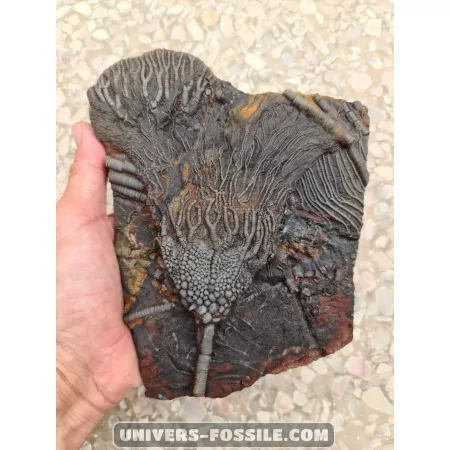Crinoid: A Fascinating Look into the Evolutionary History of Crinoids

Crinoid
- Structure and Appearance: Fossil crinoids come in various forms, but many have a unique plant-like appearance. They consist of a calcareous stem or "column" attached to the seafloor, from which radiate branched arms. These arms were used to capture food particles from the water.
- Size: Fossil crinoids could vary greatly in size, ranging from a few centimeters to several meters in length for some species.
- Location: Crinoids were abundant in ancient seas, primarily inhabiting shallow waters. Their fossilized remains are often found in sedimentary rocks formed from marine deposits.
- Composition: The most commonly fossilized parts of crinoids are their calcareous ossicles, which formed the stem and arms. These structures are often well-preserved in fossiliferous rocks.
- Lifestyle: Crinoids were typically sessile organisms, attached to the seafloor by their column. Some were mobile during their juvenile stage, but many adult crinoids remained fixed in one spot throughout their lives.
- Evolution: Crinoids have a long evolutionary history, dating back to ancient times when they were an integral part of marine ecosystems.
Crinoid: A Fascinating Look into the Evolutionary History of Crinoids
Crinoids have a rich evolutionary history, dating back over 500 million years. While they underwent many changes over time, some basic features of their anatomy remained relatively unchanged, allowing paleontologists to trace their evolution through geological ages.
